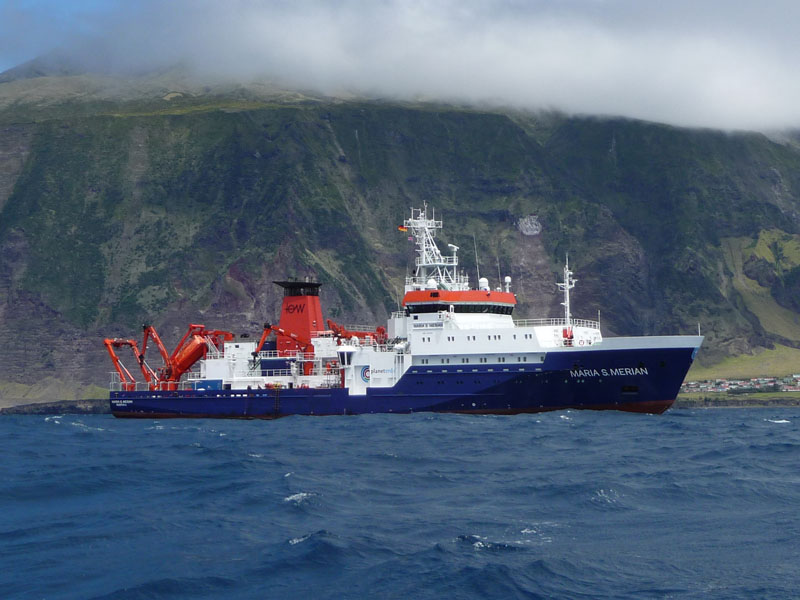MARIA S. MERIAN MSM123
- Area:
- Northwest Atlantic Ocean; Labrador Sea
- Time:
-
23.11.2023 - 27.12.2023
- Institution:
- GEOMAR
- Chief scientist:
- Christa Marandino
The Labrador Sea is a high latitude region of the ocean where open ocean deep convection and seasonal solubility and biology-driven changes occur faster than air-sea gas exchange can re-establish air-sea equilibrium. It is, consequently, one of the most intense sinks for carbon dioxide (CO2) and oxygen (O2) globally. Although it is clear that high-latitude regions are key for ocean atmosphere transfer and equestration in the deep ocean, our knowledge of the basic forcing mechanisms at play there remain very uncertain. Gas, momentum, and heat exchange are highly nonlinear functions of wind speed, indicating that mechanisms operating at high winds, such as bubble mediated transfer, need to be constrained.
Global change issues such as increasing temperatures, ocean acidification, and ocean
deoxygenation are interlinked and in order to understand the changes in uptake, biogeochemical cycling, and feedback processes of environmentally important gases, mechanisms controlling their air-sea exchange must be understood. Bubble-mediated gas exchange is under-represented in models, in part due to a lack of mechanistic understanding and, thus, limited ability to parameterise its contribution to the overall gas flux. The overarching objective of BELS is to understand and quantify bubble-mediated gas exchange mechanisms. Special attention will be given to the forcing and parametrisation of air-sea exchange for the insoluble gas O2. We will employ range of complementary techniques to tackle the questions posed, including eddy covariance direct fluxes, continuous profiling, tracer release, noble gases, and direct bubble characterisation. By combining these techniques, we will have the major advantage of connecting bubble process understanding with comprehensive flow, gas saturation and gas flux measurements, and directly observing bubble-mediated gas uptake mechanisms.



